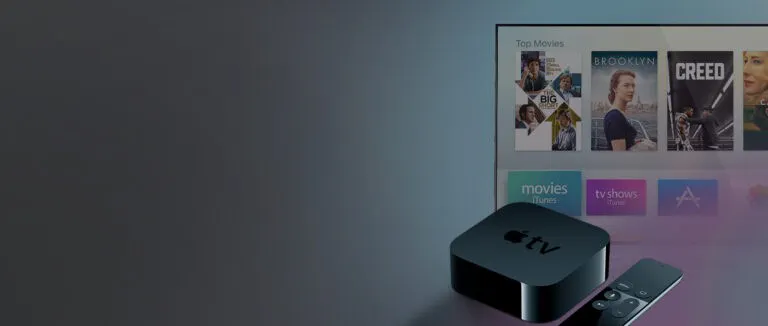Building Interactive Experiences: Apple TV Application Development

Apple TV, with its robust hardware and intuitive interface, has emerged as a significant platform for streaming media, games, and interactive applications. Developing an app for Apple TV can open up new opportunities for reaching a broad audience in the living room, the heart of modern home entertainment. This guide delves into the essentials of Apple TV application development (Opens in a new window), covering the tools, technologies, and best practices to help you create compelling and engaging apps for the tvOS platform.
Understanding tvOS
tvOS is the operating system that powers apple tv application development. It is based on iOS, with a similar architecture and development environment, making it relatively easy for iOS developers to transition to tvOS app development. However, tvOS has its own unique set of features and guidelines tailored to the big screen and remote-based navigation.
Getting Started with Apple TV App Development
Development Environment
To start developing apps for Apple TV, you need:
Xcode: The integrated development environment (IDE) for Apple platforms.
tvOS SDK: A part of Xcode, it includes the libraries and tools needed for tvOS development.
Apple Developer Account: Necessary for app distribution and access to development resources.
Setting Up Your Project
Open Xcode: Make sure you have the latest version of Xcode installed.
Create a New Project: Choose "tvOS" as the platform and select a template that matches your app type, such as "Single View App" or "Game".
Configure Your Project: Set the project name, organization identifier, and bundle identifier.
Coding for tvOS
tvOS supports several programming languages and frameworks:
Swift: The preferred language for Apple platform development.
Objective-C: Supported, but Swift is recommended for new projects.
UIKit: Provides the basic building blocks for user interfaces, similar to iOS.
TVMLKit: A framework for creating apps using TVML (TV Markup Language), JavaScript, and TVJS (TV JavaScript).
Designing the User Interface
Focus-Driven Navigation
tvOS relies on a focus-driven navigation model, where users interact with the interface using the Siri Remote. The system highlights the currently focused item, making it clear and easy to navigate.
Focus Engine: Manages focusable items in the interface. Ensure your UI elements can gain and lose focus appropriately.
Parallax Effects: Enhance the focused state with depth and motion effects.
Top Shelf
The top shelf is a prominent area on the Apple TV home screen where your app can showcase featured content when installed. Use it to attract users with engaging previews and recommendations.
Top Shelf Image: A large image representing your app’s featured content.
Top Shelf Carousel: A series of images or videos providing a preview of your app’s content.
Implementing Core Features
Media Playback
If your app involves streaming or playing media, leverage the AVKit framework for a seamless experience.
AVPlayer: A powerful class for managing media playback.
Media Controls: Integrate standard playback controls to provide a familiar experience.
User Authentication
Many tvOS apps require user authentication. Use the AuthenticationServices framework to streamline the process.
Single Sign-On (SSO): Simplifies the login process for users who have already authenticated with their TV provider.
OAuth: Implement OAuth for secure and standard authentication.
Gaming
tvOS supports a variety of game controllers, including the Siri Remote and third-party MFi (Made for iOS) controllers.
GameplayKit: A framework providing tools for creating complex game logic and mechanics.
SceneKit and SpriteKit: Frameworks for developing 3D and 2D games, respectively.
Testing and Debugging
Simulator
Xcode includes a tvOS simulator for testing your app without physical hardware. However, testing on a real apple tv application development is crucial to assess performance and user experience.
Debugging Tools
Xcode Debugger: Use breakpoints and logging to troubleshoot issues.
Instruments: Profile your app to identify and resolve performance bottlenecks.
Beta Testing
Utilize TestFlight to distribute beta versions of your app to testers and gather feedback before the official release.
Submitting to the App Store
App Store Guidelines
Ensure your app complies with Apple’s App Store Review Guidelines for tvOS apps. Key considerations include:
User Experience: Provide a smooth, intuitive, and engaging experience.
Performance: Optimize for quick load times and smooth navigation.
Content: Ensure your app’s content is appropriate for all audiences.
Submission Process
Prepare for Submission: Create app icons, screenshots, and a compelling app description.
Archive and Validate: Use Xcode to create an app archive and validate it against tvOS standards.
Submit for Review: Submit your app through App Store Connect and await Apple’s review.
Conclusion
Apple tv application development can be a rewarding endeavor, offering the opportunity to reach users in a unique and engaging way. By leveraging the powerful tools and frameworks provided by Apple, and adhering to best practices for tvOS development, you can create high-quality, immersive apps that stand out on the big screen. Embrace the challenge, and let your creativity shine as you bring your Apple TV app to life.


